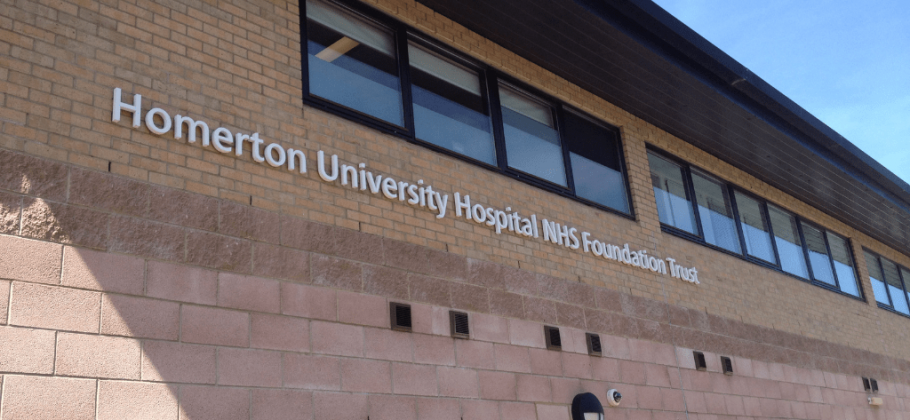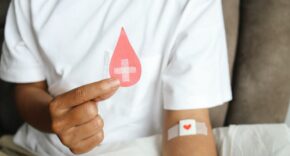At Homerton, we are incredibly ambitious in our digital transformation goals. In the coming year, we hope to go fully digital or ‘paperless’ to improve the quality of care we deliver to our patients and, of course, to meet imperatives for finding additional funds under our Local Digital Roadmap (LDR) and Sustainability and Transformation Partnership (STP) covering the North-East London area.
It is now a given that the NHS must find significant efficiencies if we are to continue to deliver care to meet the demand. At Homerton, we need to save £1.5m from the Outpatient Department alone. So, when we talk about transformation, let’s be clear it’s not for transformation’s sake!
Paperless is hospital driven
Embracing digital versus paper-based data and processes promises huge efficiencies in the hospital, Trust-wide and across the NHS as a whole.
While the deadline for the ‘Paperless NHS‘ initiative has been set to 2020 (with some suggesting 2027 as more realistic), Homerton has been paperlite for some time now and was always on track to achieve the original deadline. Our CEO is pro digital transformation and his vision is wholeheartedly shared by clinicians. In fact, Homerton is at the forefront of this initiative and we’re proud to be a reference site for other hospitals.
It is important to say that ‘paperless’ is no mean feat. There is still a lot of paper within the Trust in the form of referral letters, patient notes, ECGs and legal documents – so there’s still a good deal of work to be done. The introduction of the NHS Digital backed e-Referral Service (e-RS) for electronic bookings of hospital or clinic appointments is a positive step in the right direction. All referrals must now come to us via this route. In the future, we’d like to see this integrated into our Electronic Paper Record (EPR) system, along with all other paper-based documents being made available electronically. Today, there is still a simple need to access and surface historic data, and make it part of the patient record through the EPR, in order to provide a complete patient history.
Working with partners that support our vision
We’ve been on a four-year journey towards achieving our digital transformation goals, selecting IT partners that have helped our vision to become a reality.
We introduced BridgeHead’s Independent Clinical Archive (ICA), HealthStore®, in 2014. One of the features of the ICA is its ability to manage all healthcare data regardless of vendor or format. Initially, the Vendor Neutral Archive (VNA) component of HealthStore was implemented, which is an essential part of our enterprise imaging strategy and something we wanted in place prior to selecting a replacement Picture Archiving and Communication System (PACS) for the Radiology Department. We needed a data repository independent of, but interoperable with, the PACS to give us greater flexibility around how our data is used and stored.
In July 2016, we began to surface data from within the ICA via our Cerner Millennium EPR. Clinicians could easily launch the ICA from the EPR to view all radiology images, in context, alongside patient notes. While the VNA component of HealthStore has been used as a central repository for storing, protecting and sharing radiology images, we always recognised the potential for the broader ICA solution to be utilised across the hospital for other purposes. We’re now in a position where we constantly ask ourselves “what else we can do with it?” One thing that became obvious to us was that other departments, primarily those using paper-based processes, could also benefit from using an ICA. The radiology project had already served as our proof of concept, so we were confident that we can replicate this work across the Trust on a much wider scale.
Today, we are in the process of moving other departmental data to the ICA, including other types of medical images, such as from Cardiology, Medical Photography and Endoscopy. But, I have also been responsible for a significant project that we’re working on to digitally transform our Outpatients department. We wanted to see more data integrated into the EPR. And with all images and records stored in one place, we asked ourselves “why not make these available to clinicians across the hospital?” Well, that’s the plan. Our goal is to have all Outpatient data outside of our EPR living and breathing within the ICA. All of this data would be accessible directly through Cerner simplifying workflow by offering clinicians one system by which to access a complete patient record.
The value of data at the clinicians’ fingertips
We know that clinicians want all available patient information in front of them at the point of care – a 360-degree patient view – and this includes data not typically found within the EPR, such as medical images or Outpatients documents, in our case, but the list goes on.
Clinicians shouldn’t need to be IT experts to get at the information they need – they don’t want to remember multiple passwords to log-in to different systems to view patient records, blood results and x-rays. Access to the data they require needs to be made simple and feel part of the environment. The integration between the ICA and Cerner Millennium, enables users to browse and locate the complete patient record, reducing clinical workflow and improving clinical efficiency – a high priority for most, if not all, hospitals.
It is incredibly powerful for clinicians to have all of the information they need at their fingertips when assessing or treating a patient. Even in an A&E setting there is often a need to access the full patient record – the more information clinicians have to hand, the easier it is to diagnose, treat and refer patients appropriately.
For example, when a patient comes in to A&E it helps to know if we are dealing with a dementia sufferer or someone with low blood pressure and/or on medication. When assessing a patient in a psychotic state, we need to know whether they are being treated for mental health problems. And we want to know if this is something new or a historical case.
Having previous patient history to hand is invaluable. Without it we might admit patients and keep them in overnight while we call mental health services and/or try to matchup and check paper records. We might repeat a blood test or scan if the information isn’t readily available – all of which can result in delays and drain already stretched resources, with patients occupying beds that could potentially be freed up sooner.
Joined up services
As well as the drive for digital, delivering joined up health and social care is high on the government agenda – you could argue the two go hand in hand. Homerton is already part of a Health Information Exchange, which enables us to see and share information with local GPs, referring hospitals, community trusts, mental health trusts and local authorities. In future, we’d like to be able to share more across a wider ecosystem.
For example, the NHS has a duty of care to share information regarding ‘at risk’ injuries to report domestic violence or child abuse with police and social services. This has always happened, but not necessarily electronically. If we could take pictures of those injuries, store and protect them correctly, they could be made available (securely) to other care providers. The potential for sharing is huge, but only when data is digitally available will we reach the nirvana of truly integrated health and social care.
The future of digital and data
As I mentioned, while much of the data we currently have in the ICA is in the form of images, we’re already starting to ingest other data formats. In future, we would like to see richer data such as echocardiograms and/or short surgical films included as part of the patient record – the ICA is the perfect place to store this type of data so that it can be surfaced to the EPR.
Although a much longer-term vision for Homerton, we can see a future where patients have access to their own records – a patient portal that integrates with the our EPR and ICA systems, collecting data from patient apps for monitoring blood pressure or blood sugar or collecting food diary information, for example. We envisage a scenario where a patient is giving lifestyle information prior to attending an appointment to save time spent with a clinician.
In terms of where we are today, our priority is to move as much patient data as possible into the ICA and ensure that it is fully integrated with the EPR to deliver a complete view of the patient. This means migrating data from our legacy applications and making it available in one place directly linked to the EPR. In doing so, we are seeing improvements in data quality and adherence to data standards.
Once we have all the data in the ICA, we can focus on the next part of our digital roadmap, which is about getting proper patient involvement. With huge savings to be found in the NHS, we all have a role to play in ensuring resources are used to best effect.
Written by Kathy Adams, a Senior Sister in the Emergency Department (ED)












